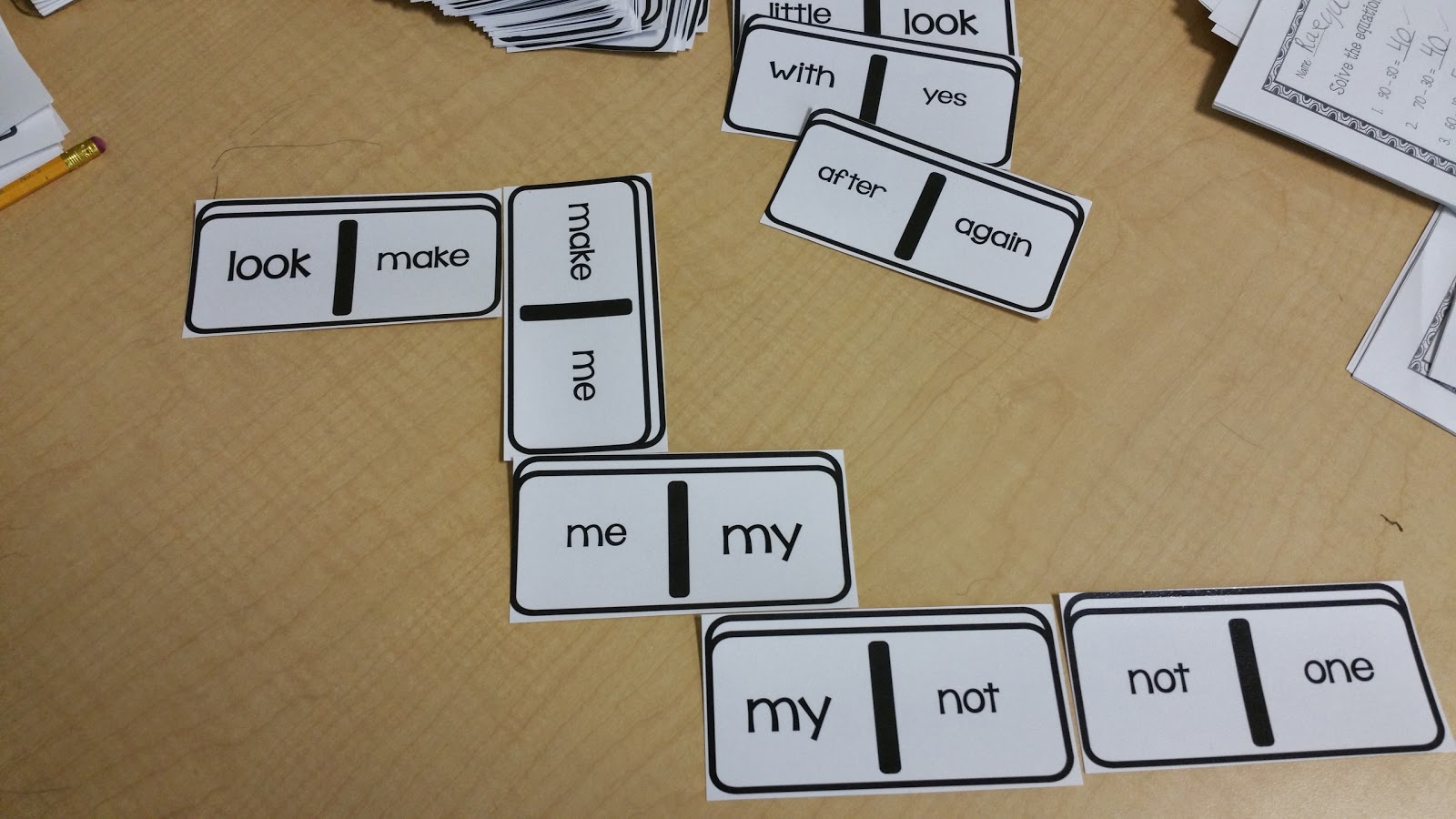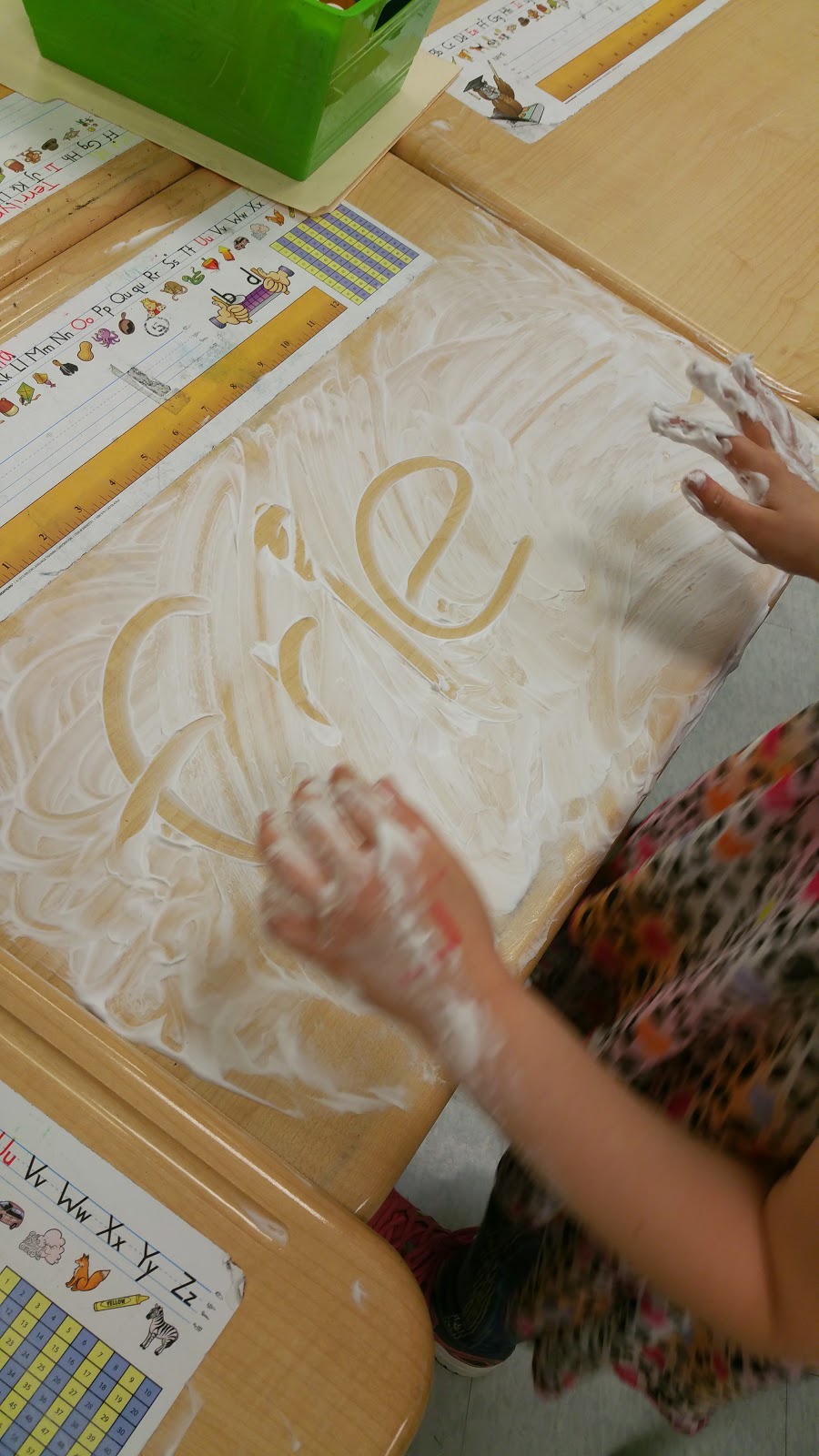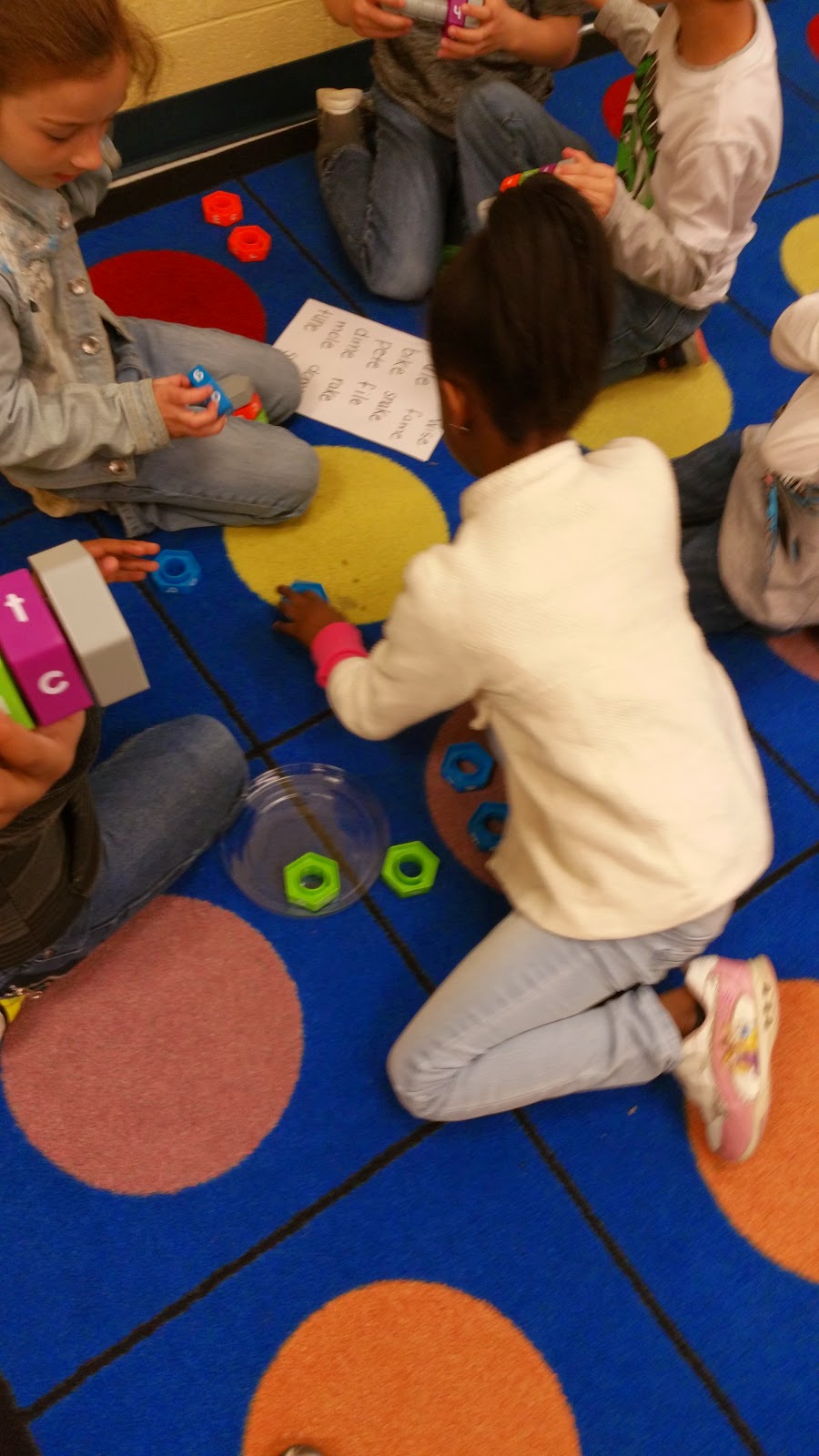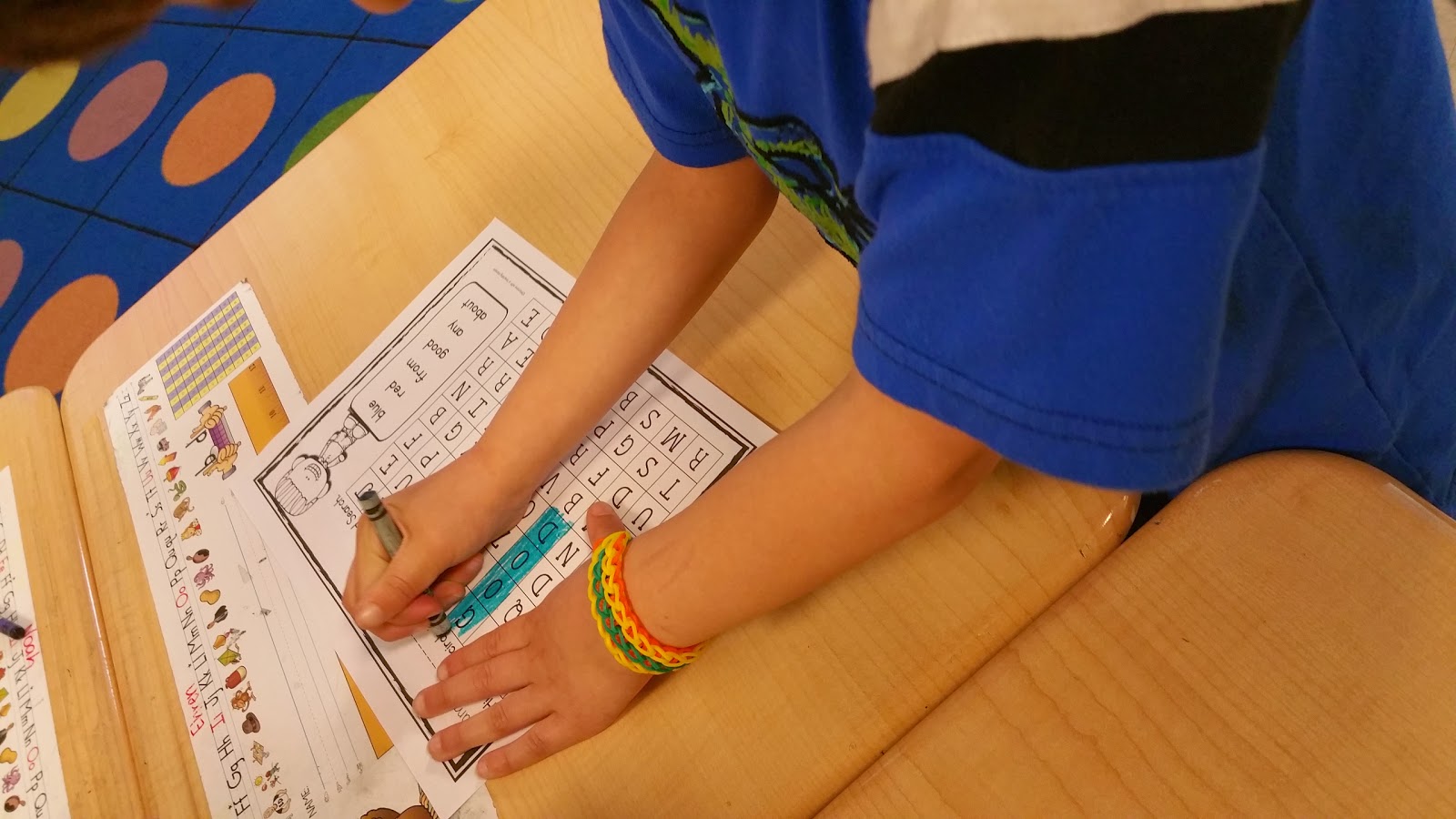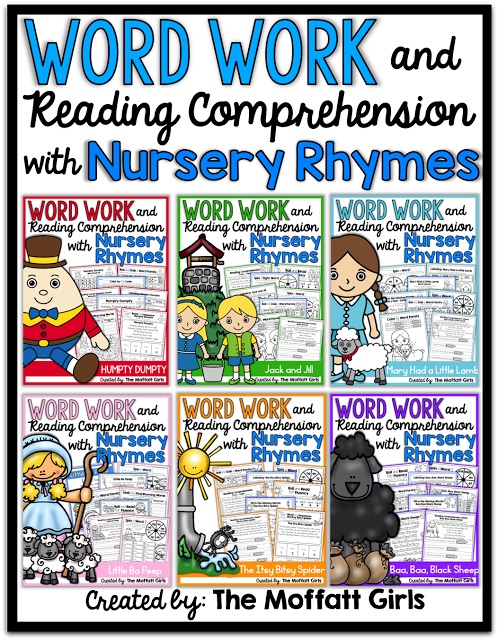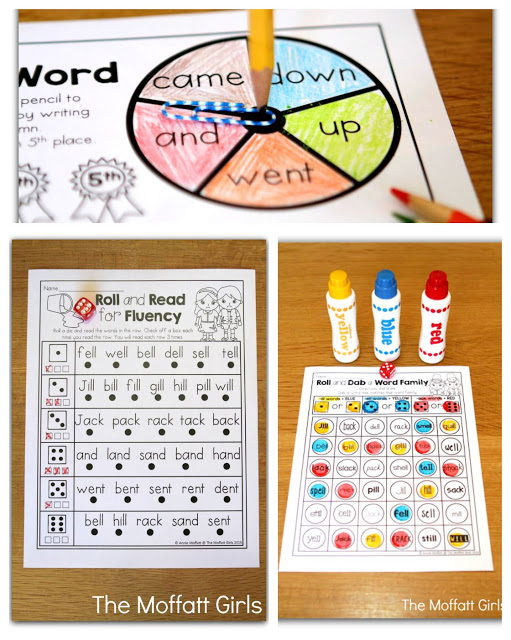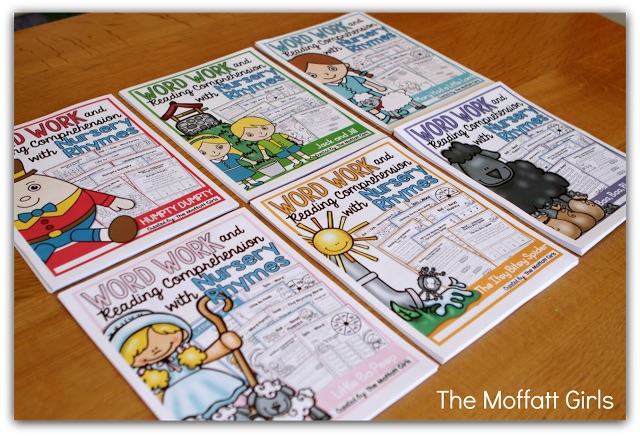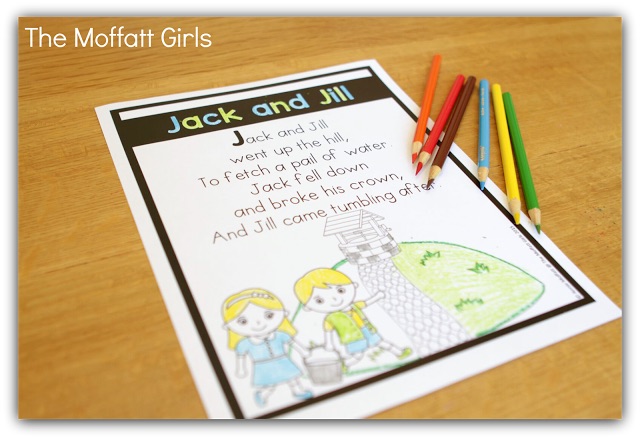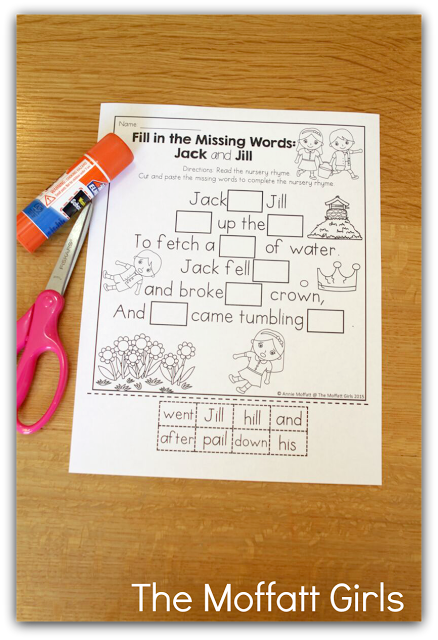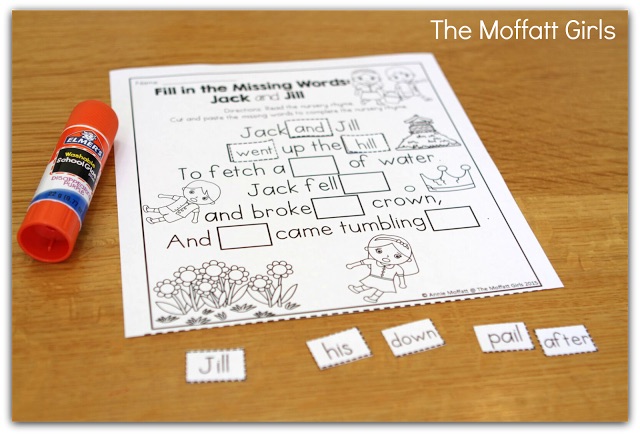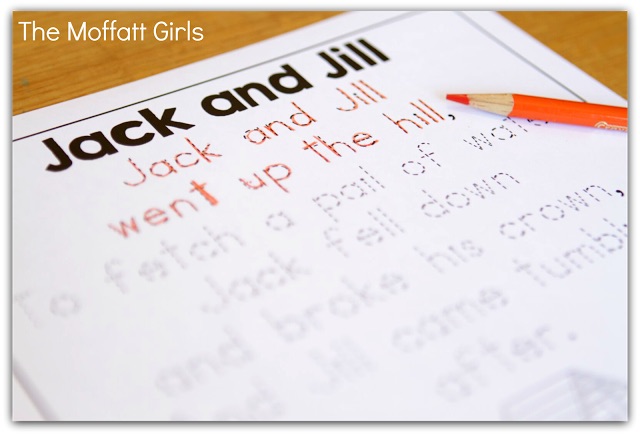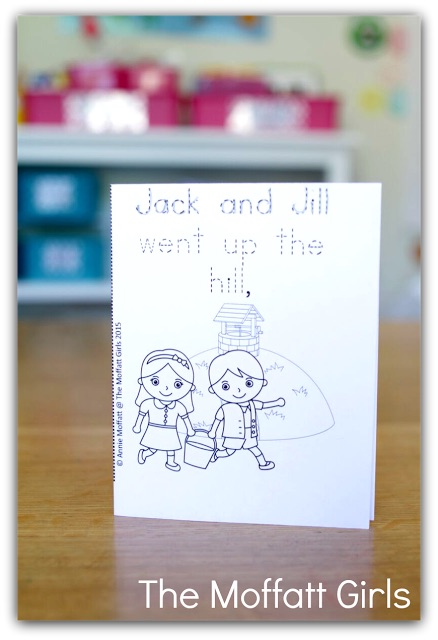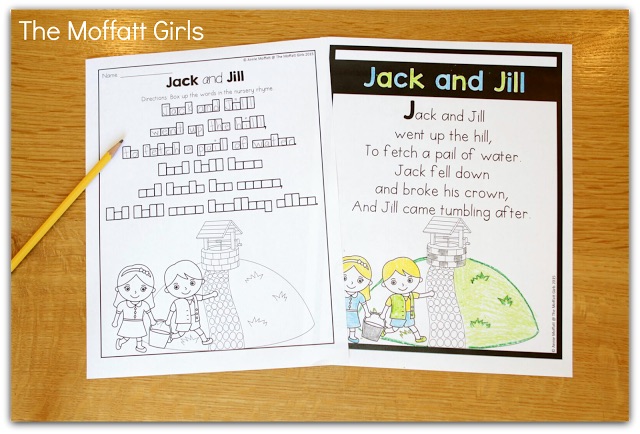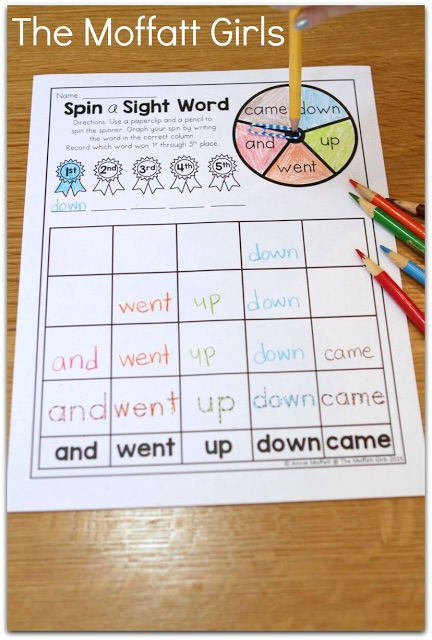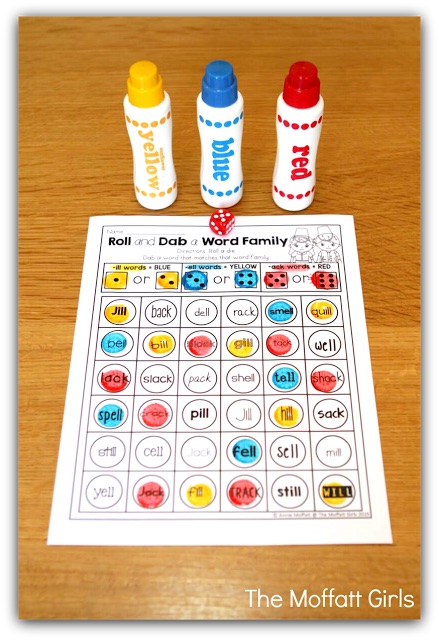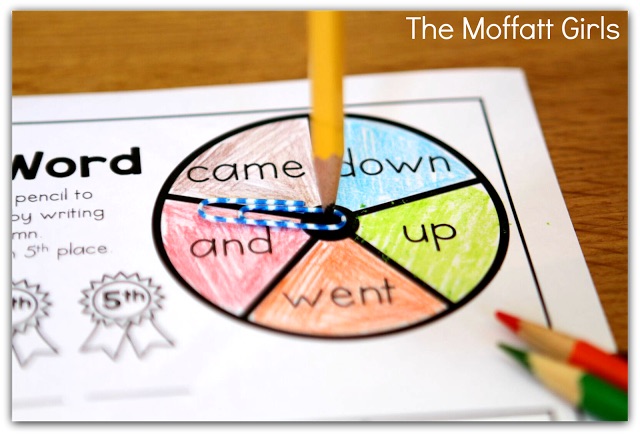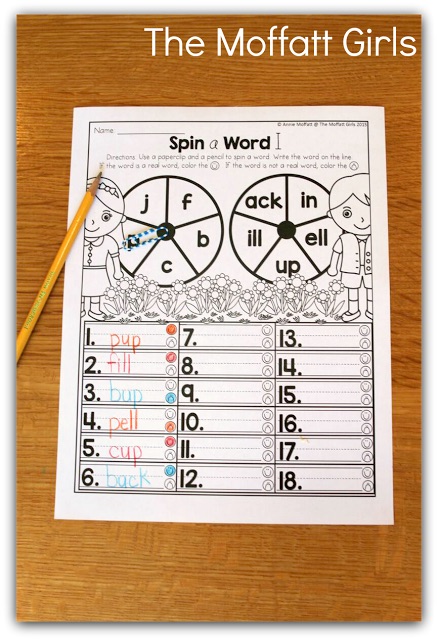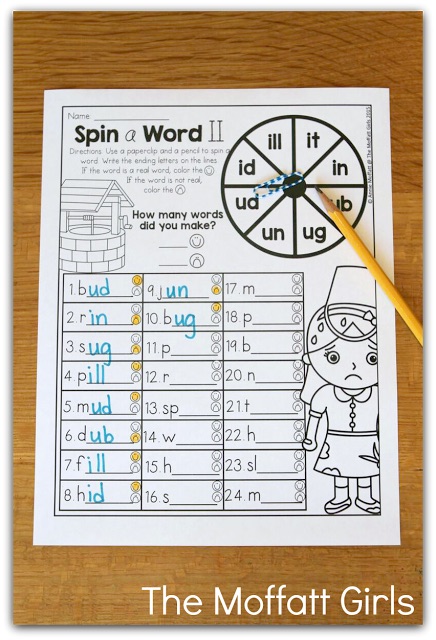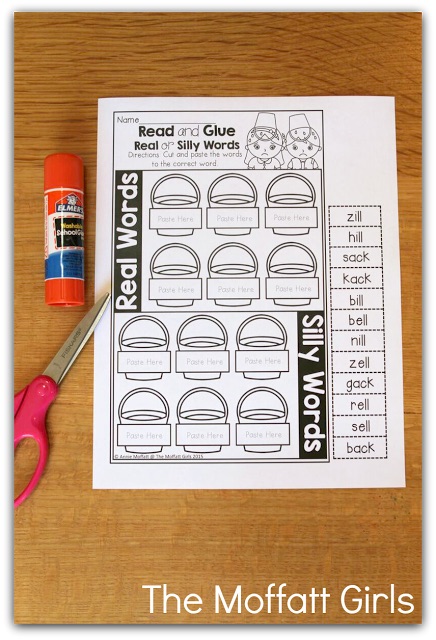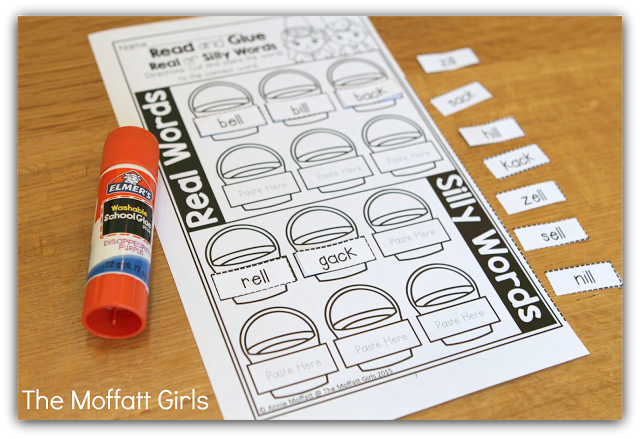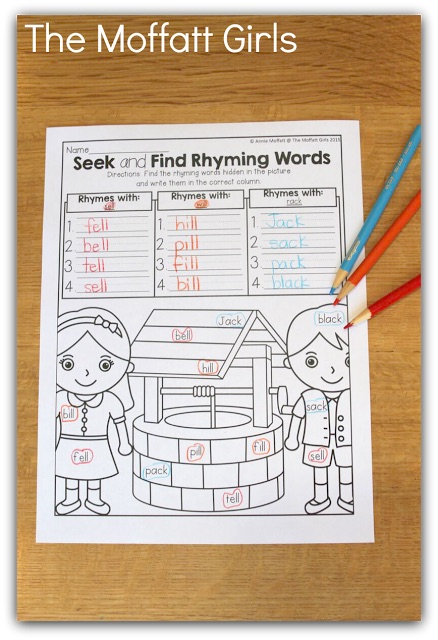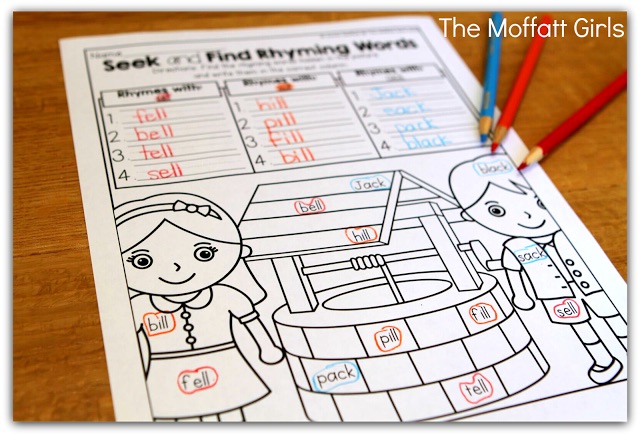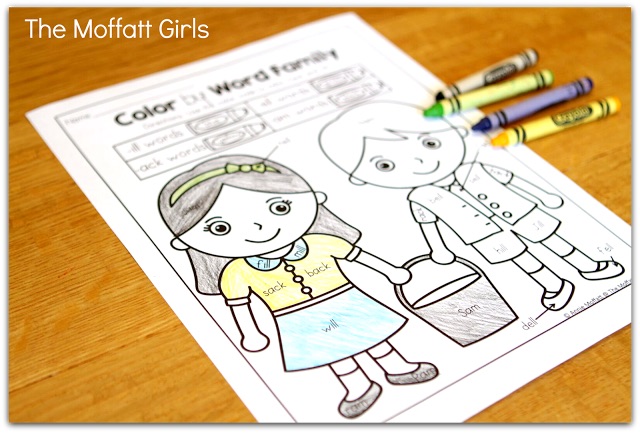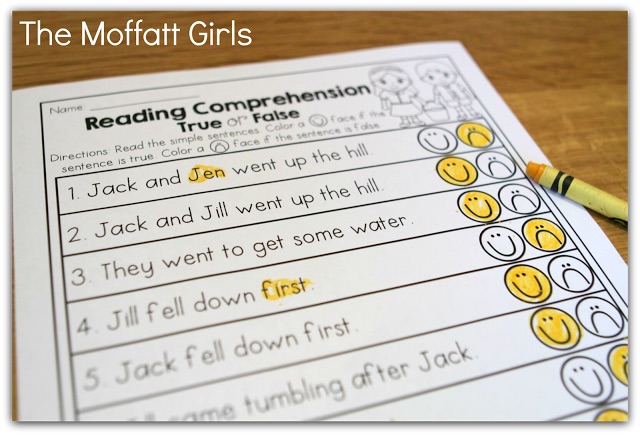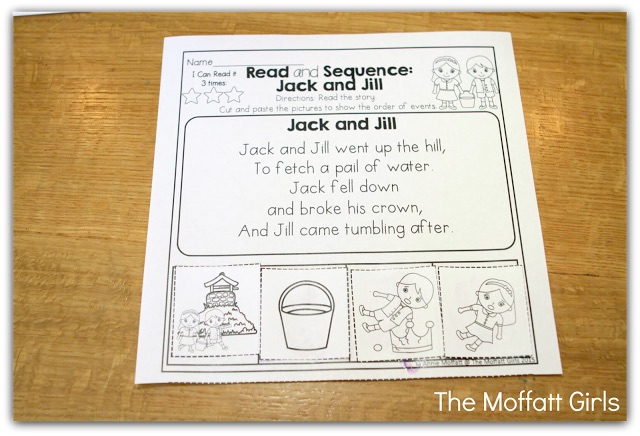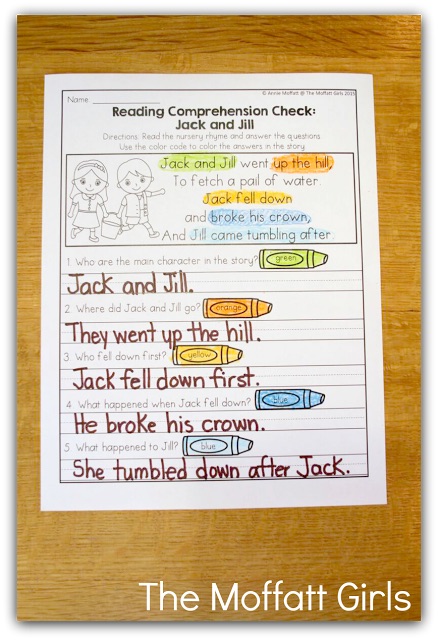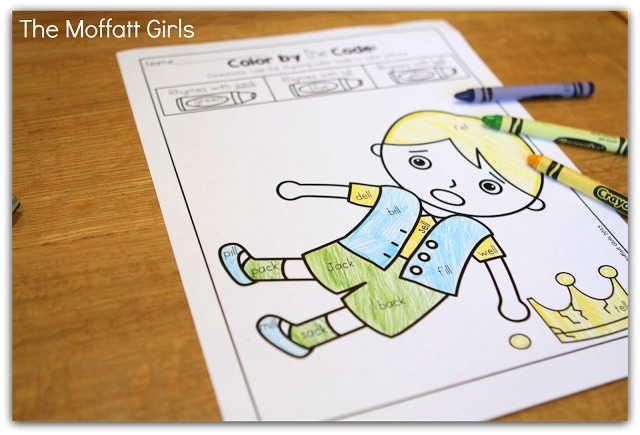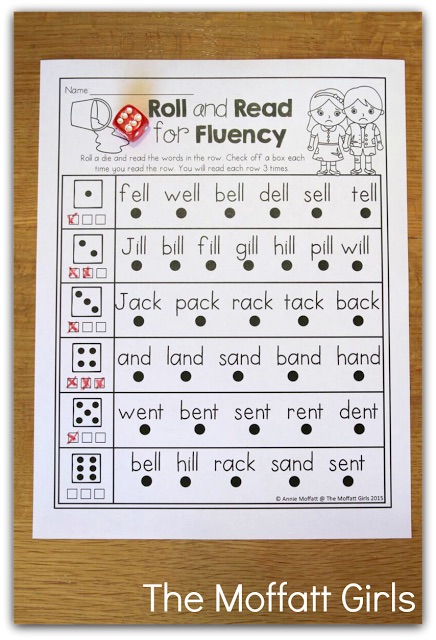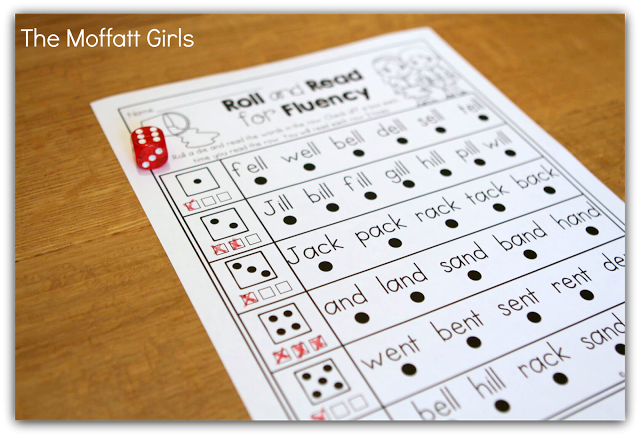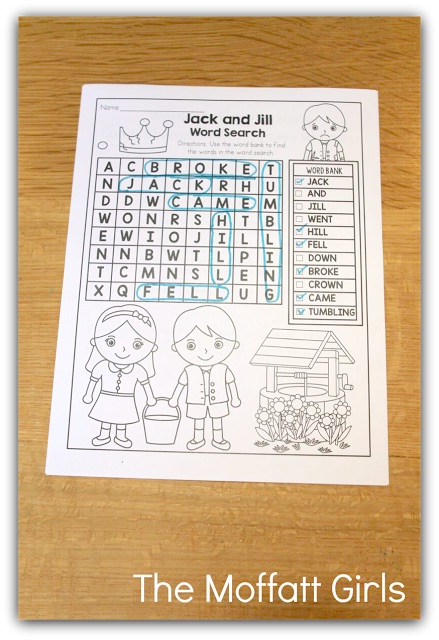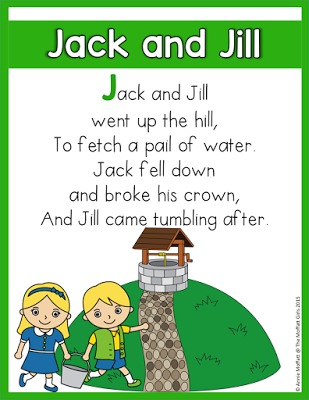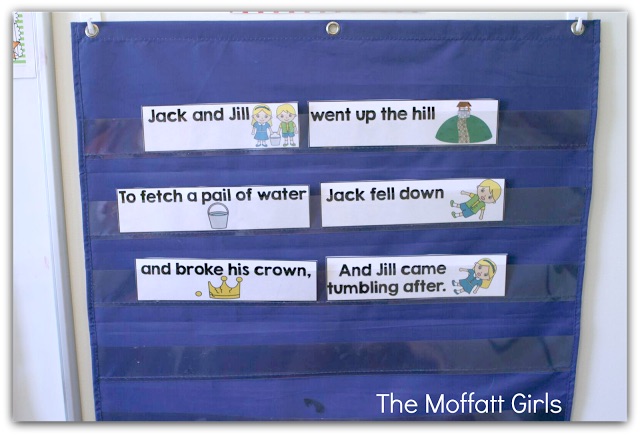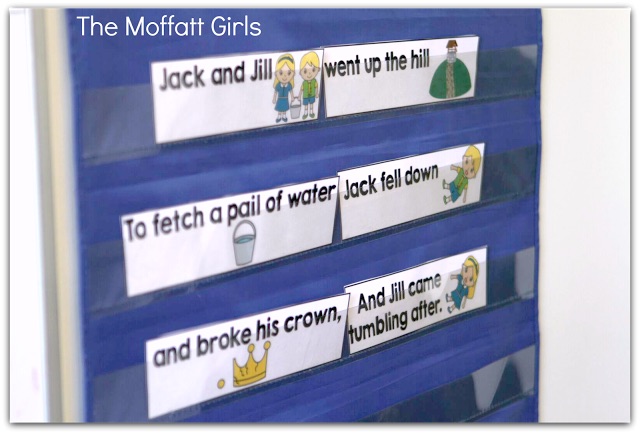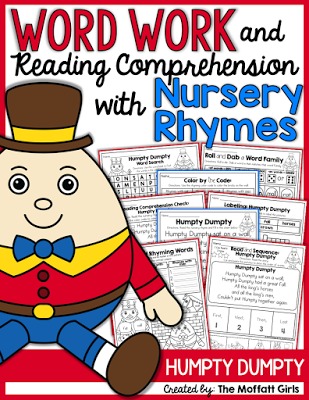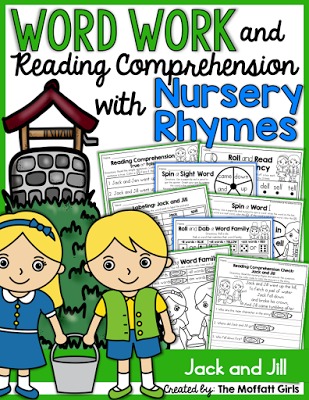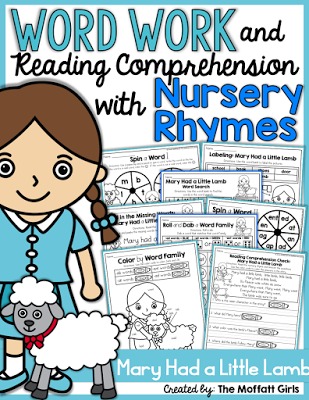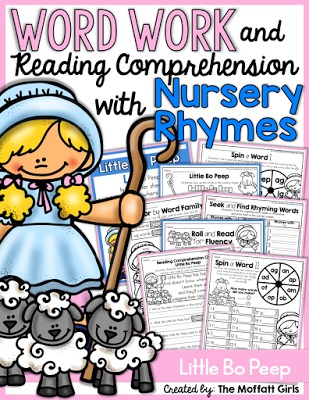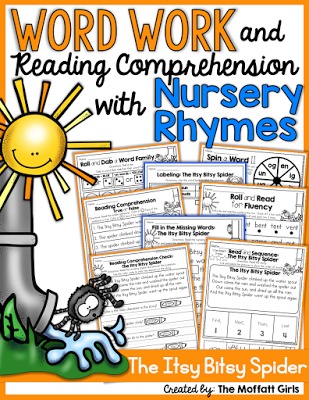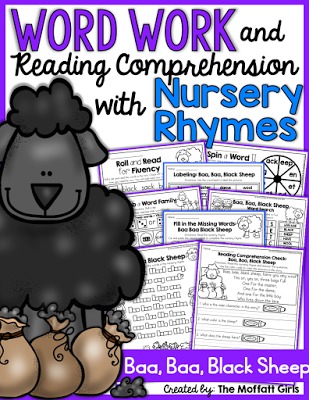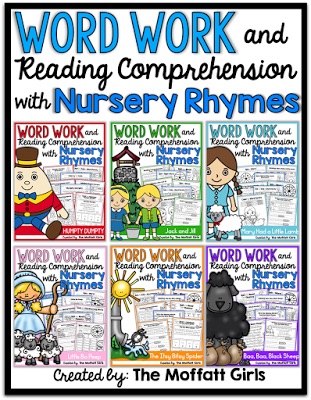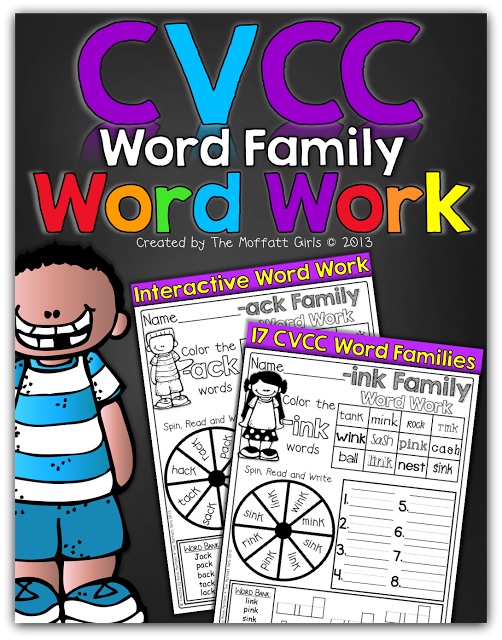Over the past two weeks, we have looked closely at defining the Daily 5™, shared strategies for rollout of the first two components, “Read to Self” and “Work on Writing,” and collected useful teacher resources on our Pre-K–6 Reading & Literacy Pinterest board. This week, as we close out this series, we turn to the remaining three rotations—“Read to Someone,” “Listen to Reading,” and “Word Work.”
As the final components of a balanced literacy framework, these three elements also leave room to be reinterpreted and leveled appropriately to meet the needs of your students. Keep reading to uncover best practices about how these three components can take shape in your classroom.
Read to Someone
Often a Daily 5 favorite, “Read to Someone” offers children the opportunity to pair up and share a book of their choosing. This rotation is sometimes referred to as partner reading, buddy reading, or read with a friend. No matter what you choose to call it, “Read to Someone” provides a meaningful time for developing readers to increase their comprehension, fluency, and accuracy. Explore a few ways to set up this round successfully:
- Become a good reading partner
Setting expectations for good reading partners in your classroom involves defining what it sounds and looks like. Because volume control can often feel like an uphill battle, we’ll start there. Research shows that the loudest voice in the room is the one that often regulates the noise level. Keep your voice down when conferring with students to set the appropriate tone and expectations in your room.
Hand in hand with voice level, our primary learners often need direction as to what “Read to Someone” should look like. WIth “EEKK” (elbow to elbow, knee to knee), a model subscribed to by the Daily 5 creators (Gail Boushey and Joan Moser), students are taught to sit side by side to easily share their text and read aloud together.
- Check for understanding
It’s not enough to practice fluent reading during “Read to Someone;” your students also should be concentrating on comprehending text. To check for understanding, set a standard practice for readers to restate aloud the “what” and “who” of what they just read or heard. Additional comprehension questions can be added for older students. Check out a few examples of how this strategy can be brought to life on our Pinterest board.
Listen to Reading
“Listen to Reading” can take many different forms, including online audiobooks and Web-based solutions. For emerging readers, time spent listening to fluent reading models is invaluable to building reading pronunciation and expression. Struggling readers also find this rotation beneficial, as it allows them to access texts that meet their listening comprehension level, even if that exceeds their reading level. Keep these strategies in mind when incorporating this rotation:
- Ensure smooth technology rollout
If you find yourself among one of those lucky few with a set of state-of-the-art devices for class, adding “Listen to Reading” to your daily rotation should be fairly straightforward. If a set of four to five “cross your fingers and hope they work today” computers is more in line with the current state of your classroom technology, rest assured that there’s no reason to lose hope! Between audiobooks from your campus or city library and your school’s computer lab, you can still give your students the opportunity to experience this rotation regularly.
Additionally, make the most of time spent at this station by ensuring that your students have the technology skills to log in quickly and treat equipment appropriately. Early on, it’s also a good idea to appoint a student to be your “tech-support helper,” so that you aren’t pulled away from working with students to assist with technology issues.
- Determine appropriate activities based on reading ability
Listening to reading is often so engaging for children, that most have no problem building stamina. You can keep this rotation exciting by providing your students with a wide variety of books to enjoy. Our online literacy solutions, Reading Eggs and Reading Eggspress, can be hugely helpful with this. Within the programs’ Online Library Catalog, students can select from over 2,000 different titles with full audio support.
For those no longer in need of “Listen to Reading,” “Computer Time” is often substituted to focus on other reading skills in an engaging environment. In Reading Eggs and Reading Eggspress, students can work through an individualized learning path of reading lessons. Each lesson contains pre-reading activities, a focus book, book quiz, and motivational rewards to keep students engaged and learning.
Word Work
The “Word Work” component of the Daily 5 focuses on spelling and vocabulary by creating a print-rich environment and offering learning manipulatives for students to experiment and develop an interest in language. Students are able to select from a variety of materials to play with words, word patterns, word families, and so on to hone their knowledge and increase their writing skills. Consider several suggestions below to make your “Word Work” area a success:
- Define procedures for materials
With such things as sand, playdough, markers, and glitter glue, the variety of materials involved in “Word Work” is often tailored to meet the needs of your kinesthetic learners. The activities in this rotation also involve a fair bit of rule following and sometimes even a watchful eye to keep them running smoothly.
Gauging the maturity of your learners is a good place to start, followed closely by rolling out new materials one at a time. Model how each is used in the context of “Word Work,” and ask students to help demonstrate proper application to build letters, words, and sentences. Making it clear that each new manipulative is a privilege in your classroom can help keep even your most active learners in line during this rotation.
- Motivate learning with focused, yet fun, activities
“Word Work” can provide excellent practice of manipulating words and developing language skills, but when involving enticing materials, it can also quickly descend into anarchy. Incorporate a variety of “Word Work” activities that motivate students to stay on task.
Using Reading Eggs, students can practice phonics skills, content vocabulary, and sight words in a game-based environment. Leveled activities align content to individualized ability levels, while Golden Egg rewards entice students to stay motivated. Reading Eggspress similarly provides an English skills area for students to practice more complex spelling patterns while earning redeemable rewards.
Ready to start using the Daily 5 framework in your classroom -or take your current use to the next level? Check out our Pinterest board of useful literacy resources, and make the Daily 5 a classroom success this year! Interested in finding out more about Edmentum’s foundational literacy solutions? Learn about Reading Eggs and Reading Eggspress!
10000+ результатов для ‘reading words’
CVC words
Диаграмма с метками
от Avmain8
Reading
Anagram of -AT, -AN, -AP, -IG -words
Анаграмма
от Askatysheva
Reading
Reading
Откройте поле
от Stacykofanova
Children
Reading rules
Halloween
Викторина
от Abcstudioenglish1
Words
i (long, short)
Случайные карты
от Olgabalitskaya
Reading
reading wr, wh
Случайные карты
от Jungle54
reading
PART 1-A&E
Случайные карты
от Jungle54
English
reading
Halloween «to be»
Викторина
от Abcstudioenglish1
Words
reading th, sh, ch, ck, nk, ng
Случайное колесо
от Jungle54
reading
-AT, -AN, -AP, -IG
Случайное колесо
от Askatysheva
Reading
AS2 Reading Unit 3
Привести в порядок
от Ladameenrose
Academy Stars 2
What Am I. Food. Starters
Викторина
от Wishtree2012
Reading
reading Y (syllable type 1 and 2)
Случайные карты
от Jungle54
reading
th
Случайные карты
от Olgabalitskaya
Reading
reading A (syllable type 1 and 2)
Случайные карты
от Jungle54
reading
reading U (syllable type 1 and 2)
Случайные карты
от Jungle54
reading
reading U and Y
Случайные карты
от Jungle54
reading
reading matching
Найди пару
от Pakhomova
reading
reading ch sh th(hard)
Групповая сортировка
от Olgabalitskaya
Reading
Spotlight 3
reading E (syllable type 1 and 2)
Случайные карты
от Jungle54
reading
reading 2 th, sh, ch, ph
Случайные карты
от Jungle54
reading
Quiz. AT AN AP IG
Викторина
от Askatysheva
Reading
g reading
Групповая сортировка
от Olgabalitskaya
Reading
Spotlight 4
reading I (syllable type 1 and 2)
Случайные карты
от Jungle54
reading
PART 1-i
Случайные карты
от Jungle54
reading
i (long, short)
Групповая сортировка
от Olgabalitskaya
Reading
Spotlight 3
Toys
Анаграмма
от Abcstudioenglish1
Words
ordinal numbers
Флэш-карты
от Abcstudioenglish1
Words
reading O (syllable type 1 and 2)
Случайные карты
от Jungle54
reading
Reading -ed in Past Simple
Групповая сортировка
от Olgabalitskaya
Reading
th
Групповая сортировка
от Olgabalitskaya
Reading
reading ee,ea,oo,oo+k,ou,ow
Случайные карты
от Jungle54
reading
Reading Gg
Классификация
от Rebrovaea86
reading
reading ar, or
Случайные карты
от Jungle54
reading
reading A and E
Случайные карты
от Jungle54
reading
part 1-a
Случайные карты
от Jungle54
reading
Pairs (-AT -AN -AP -IG) word families
Совпадающие пары
от Askatysheva
Reading
Reading Cc
Классификация
от Rebrovaea86
reading
i (long, short)
Групповая сортировка
от Olgabalitskaya
Reading
cvc reading
Сопоставить
от Alexandrovna891
reading stories1
CVC words reading
Случайное колесо
от Nastyanaaaastya
cvc
reading
PART 1-o
Случайные карты
от Jungle54
reading
Reading
Анаграмма
от Khimki
Начальная школа / начальная
English
reading
Jolly 1+2 + g o u
Случайное колесо
от Wishtree2012
Reading
reading ng, ck, ay, ey, oy
Случайные карты
от Jungle54
reading
Home Reading 3 Vocabulary Task GAPS
Пропущенное слово
от Tnvmipt
Reading
verbs
vocabulary
drill
English
test
text
words
work
PART 1-u
Случайные карты
от Jungle54
reading
Reading ar, or
Случайные карты
от Smolenskayaelen
Reading
Jolly 1-2-3 2 part
Случайное колесо
от Wishtree2012
Reading
Present Simple and Continuous compared
Привести в порядок
от Glumarmail
Reading
Home Reading 3
Найди пару
от Tnvmipt
Reading
Speaking
unit 3
test
text
words
work
Easter ABC-STUDIO
Викторина
от Abcstudioenglish1
Words
School Subjects
Анаграмма
от Abcstudioenglish1
Words
reading oo
Групповая сортировка
от Olgabalitskaya
Reading
Spotlight 4
PART 1-e
Случайные карты
от Jungle54
reading
Actions
Случайные карты
от Glumarmail
Reading
Welcome 1 Unit 10 lesson 1
Откройте поле
от Glumarmail
Reading
Welcome 1 Unit 10 les 2
Пропущенное слово
от Glumarmail
Reading
Reading
Анаграмма
от Karnelia91
Reading for YLS
Reading letter Y
Групповая сортировка
от Juliadron1987
Начальная школа / начальная
Reading rules
Spotlight 3
Two years ago when my I finished up my degree, and I was contacted by my current principal, that she had a KG and a 1st grade opening, and which would I prefer? I had a panic attack.
First of all, even though I’ve always wanted to be a teacher, and now I was done with school, and getting offered a position, it was all becoming so real. BUT kindergarten or 1st grade——don’t they learn to read in KG and 1st grade, how am I going to get kids to read, what if I can’t get them to read, what if what I do has no impact at all, what if after 180 days of instruction, they can’t read whatsoever?—all these thoughts were racing through my mind.
My student teaching experience was in grade 5th and 2nd, so going off experience, I went with 1st. My first year teaching was a whirl-wind. I was a brand new teacher, I had a baby, I feel like I seriously have no recollection of what happened that year.
Then this year started, and if you have read my other posts you know we started a departmentalized model. I teach a certain subject to the entire 1st grade, each marking period this subject changes. First marking period I taught reading, then writing, then math, now I’m closing up the year teaching the reading again. Specifically FUNdations, which is the phonics program from Wilson, and then I pull 2 small groups daily.
The FUNdations program is a very scripted program, however, I truly believe in the power it has had with the progress of our students. During the small group rotation time, the students that aren’t working with me are either reading to themselves, or a buddy, on the computers, or doing word work that reinforces the concepts taught that day in FUNdations.
I try to mix it up with the word work for my kiddos, so they don’t get bored with the same activity.
Mondays students play «KA-BOOM» If you aren’t familiar with KA-BOOM, you have to try it out. It can be done with anything really from math to reading concepts! I used old Crystal Light tubs, then took popsicle sticks and wrote words on them. I have different ‘tubs’ for different skills—Kaboom Sight words, Kaboom words with vowel teams, Kaboom words with suffixes, Kaboom words with silent e, Kaboom words with blends and digraphs, and Kaboom words with R-controlled vowel words. My kiddos LOVE these games!! You write Ka-boom on about 2-3 sticks, then the rest of the sticks you write words (or equations for math), then students pull sticks to read them. The sticks they are able to read, they keep, the ones they can’t they put back. If they happen to pick one of the Ka-boom sticks, they put all their sticks back, except keeping the Ka-boom stick out (otherwise the game will go on forever!!)
Tuesdays are spent doing some sort of work with sight words. This week, I had the kiddos write their sight words in shaving cream on their desk. I also have sight word dominos, flashcards, or sight word match up. You can find the Domino Sight Words
Wednesdays are for building words. I got this really fun construction building words activity from my Scholastic Book Order (with my points of course!) They also enjoy building words with magnetic letters and playdoh, which I alternate every week which way they build their words.
Thursdays are our day to be detectives. During their word work time, they have these 1/2 sheets of paper, and they look through their independent reading materials to fill in words that have the pattern that they are looking for. I apologize I don’t have any pics of this word work activity in action, I just added it this past week, and didn’t get a chance to snap any photos! I have it printed on card stock and laminated so to reduce paper usage (which is a problem in my school). You can find the Word detective Recording Sheets
On Fridays, I consider that my accountability and formative assessment day. I give them a paper that has a sight word search on one side, and a small reading passage that they have to mark up and identify the words or word patterns we have worked on that week. I collect this, and then am able to reteach as necessary.You can find the Reading Passages here and the Sight Word Search Puzzles
I think whatever the word work you choose for your kiddos, it’s important that it matches the skills that you are teaching, that way they are able to connect from things you’ve said or they have seen into what they are doing.
Some additional word work ideas I have used are «Make a sentence», where students use pocket charts and there is a single word on an index sized card. They can create their own sentences. Fluency reading, where the students read their sentences (on a ring) to a partner 3 times and check it off each time they read. ABC order—helps students to recognize the importance of how to order words so they are in alphabetical order. I have also done task cards that go with what I have introduced, like adding silent e to the word.
It has been amazing to see the progress with all the kiddos from the beginning of the year to now!! I am so excited to watch them grow during these last few weeks of school. Hopefully, you have got some new ideas to add to your word work rotation or center.
Teaching Word Work and Reading Comprehension through Nursery Rhymes
Nursery Rhymes play such an important role in a child’s language development. The repetition of rhymes help teach children patterns in language and how words work. I am SUPER excited to take some common nursery rhymes to a WHOLE NEW level! I will be using six familiar nursery rhymes to help my 1st grader work with words, comprehension, sight word recognition and fluency.
*Humpty Dumpty
*Jack and Jill
*Mary Had a Little Lamb
*Little Bo Peep
*The Itsy Bitsy Spider
*Baa, Baa, Black Sheep
The pictures below will show pages included in the Jack and Jill packet.
The activities in the bundle are similar so that students can focus on building fluency, comprehension and working with different word families.
Jack and Jill personal poster
This is a great way to familiarize kids with the nursery rhyme and let them read it a few times.
Fill in the Missing Words:
Cut and paste the missing words into the correct boxes.
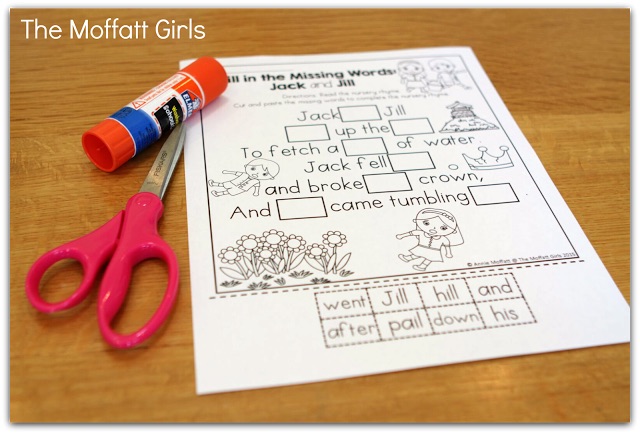
Jack and Jill traceable page
The traceable page is great for working with words, proper letter formation and spelling patterns.
Jack and Jill foldable mini-book
This 4 page foldable mini-book is also traceable.
Trace the words in the nursery rhyme.
Jack and Jill: Box up the Words
Students can use their personal posters or tracable mini-books to fill in the Box up the Words page.
The boxes are perfect for allowing kids to see spacing in letters and word to word correspondence.
Roll and Dab a Word Family!
Roll a die and dab a word in that word family.
For example, if you roll a 1 or a 2, dab an -ill word.
If you roll a 3 or 4, dab an -ell word.
If you roll a 5 or 6, dab an -ack family word.
The packet primarily work with word families in the nursery rhyme.
Spin a Sight Word
Use a paperclip and a pencil to spin a sight word from the nursery rhyme.
Spin and record the word. See which word makes it to 1st-5th place.
Race to the top! Fun and effective!!
Here is our paperclip spinner up close!
I colored them to make it a bit more fun.
Spin a Word I
Make a paperclip spinner and spin both spinners to make a word.
If the word is a real word, color the happy space.
If the word is not a real word, color the sad face.
This is such a FUN, hands-on way to work with words, both real and silly.
Spin a Word II
Spin the ending to make a word. This is also a great way to sound out words and make new words.
Again, students will color the happy or sad face for real or silly words.
Read and Glue Real or Silly Words
Cut and paste the words to the correct buckets.
The words in this packet work with word families from the Jack and Jill packet.
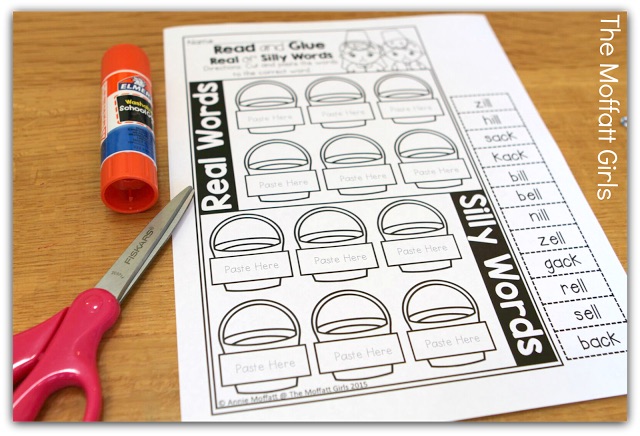
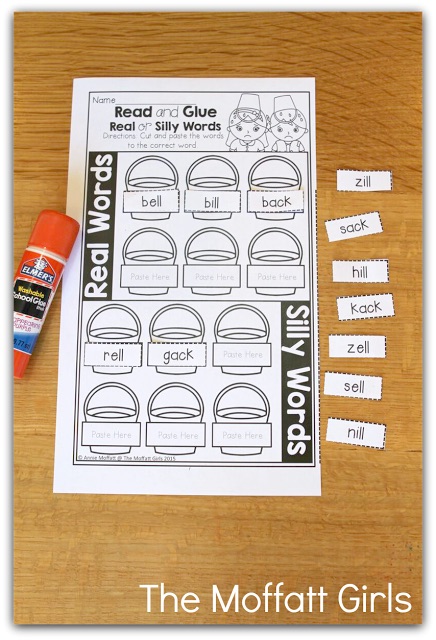
Seek and Find Rhyming Words
Seek and find the word that rhyme.
Record them in the correct columns.
Color by Word Family
Use the color code to color the picture. Kids LOVE to color and this is a great way to work on identifying word families and patterns in words.
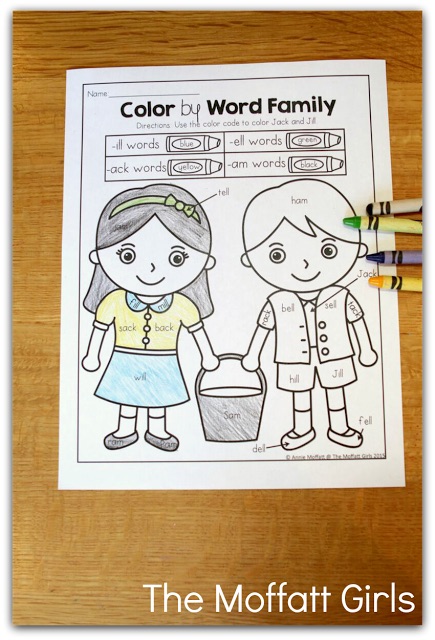
Reading Comprehension: True or False
Did they read carefully and did they understand what they read?
This simple page will aid in students comprehension as they read the sentences to answer the comprehension questions. If the statement was false, we color the part of the sentence that makes it false.
For example:
Jack and Jen went up the hill. (false)
This task makes sure that students are reading carefully.
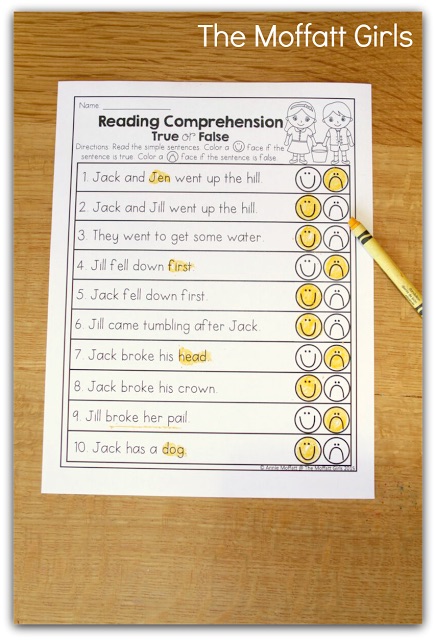
Read and Sequence: Jack and Jill
Cut and paste the pictures in the correct sequence.
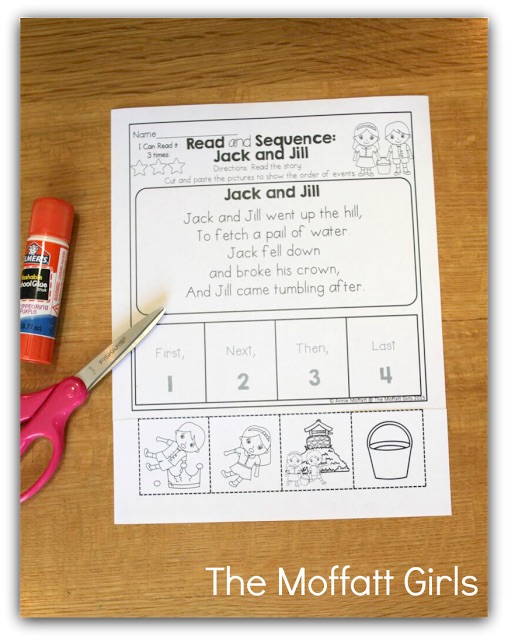
Reading Comprehension Check
Students are required to read the simple nursery rhyme and answer the question in two ways:
1. Write a simple response. This method is far more effective than the fill in the bubble method.
2. Look back in the text to color code the answer. This activity is extremely helpful because it allows kids to look back in the text for the answers.
Color by the code:
Use the color code to color the picture.
This page will work with either word families or sight words.
Roll and Read for Fluency!
This fun, fast paced page will help work with fluency!
Roll a die and read the words in that word column. After you read the words in the column, check off a box. Continue playing until all rows have 3 checked off boxes. The game goes by fast and the fluency increases quickly!
Jack and Jill: Word Search
Find the words from the nursery rhyme in the word search.
Each packet also has a color version to hang up in the classroom:
We also have the nursery rhyme printed on sentence strips for our pocket chart…
Be sure to follow us on Instagram to see our packets in action.
You can purchase the packets individually here:
Also, check out these other fun word work activities to build fluency and confidence in reading: Click Here.
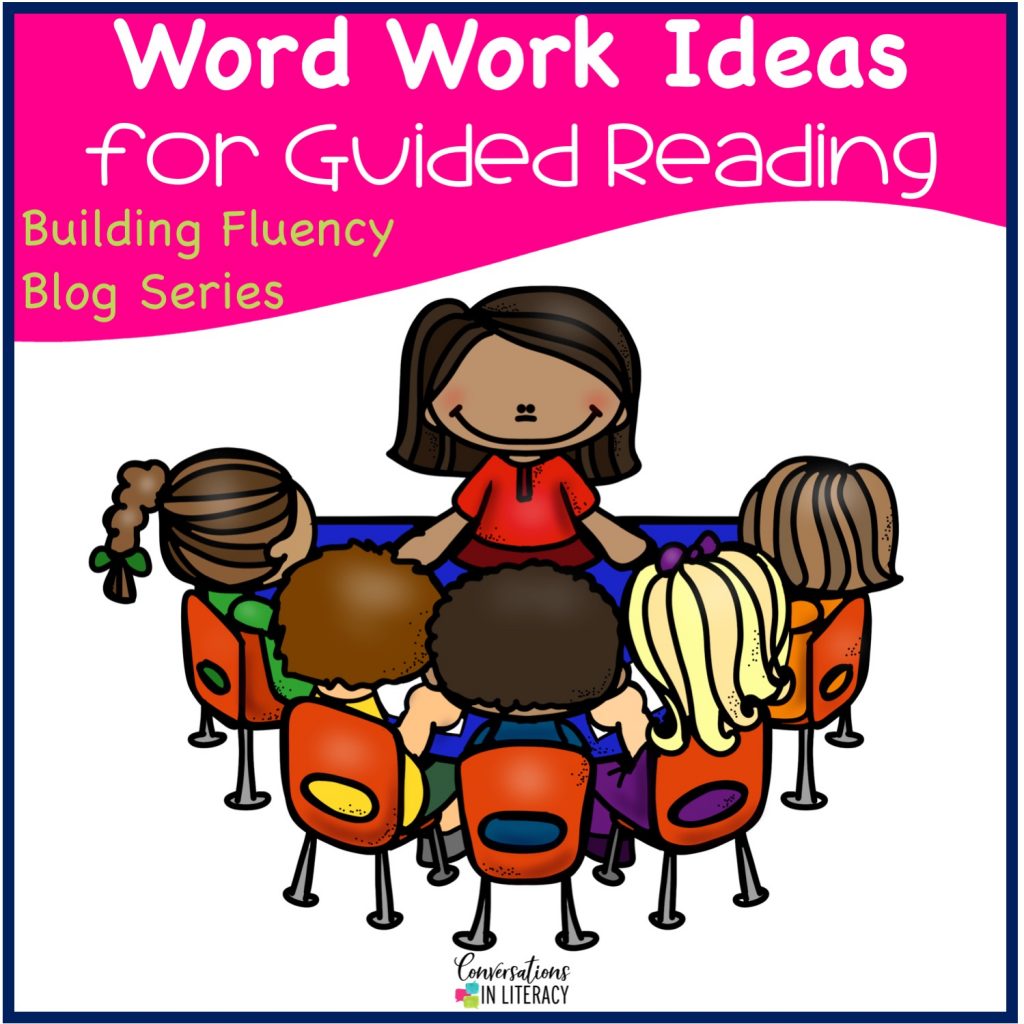
Building fluency during guided reading is our current series. To build fluency, we sometimes must back up to the word level and look at phonics and decoding. Students need automaticity with sounds, word parts, and whole words to increase their fluency. And as always we work to improve fluency so comprehension is more meaningful. You can find the first post in this fluency series right here.

One of the most overlooked, but easiest activities to do to increase phonics skills is using sound charts or linking charts. The one above is for building blends and digraphs. The best way is to use it as it is in different activities: read it across, down, find the picture that begins with the /sn/ sound, say all the beginning sounds in the third row, etc… Then try removing the pictures or the letters from the chart and use it again with different activities. Keep it quick and moving!

Another quick idea for at your guided reading table, either as a warm up at the beginning or during your word work time, would be phonics posters. Short vowel posters on your wall make a quick reference guide and can be used for quick review- read the short u poster, read the long vowel o poster, etc. Keeping the phonics pages in a notebook and having students read them out loud as a quick activity is a good way to keep those sounds automatic. Be sure to have students read the sentences at the bottom to get in the important application step! You don’t want to always practice in isolation- get words into context.

I also like to keep word parts (word families, blends & digraphs, vowel combos, prefixes and suffixes) printed on cards. Flip through these cards as a super quick review.
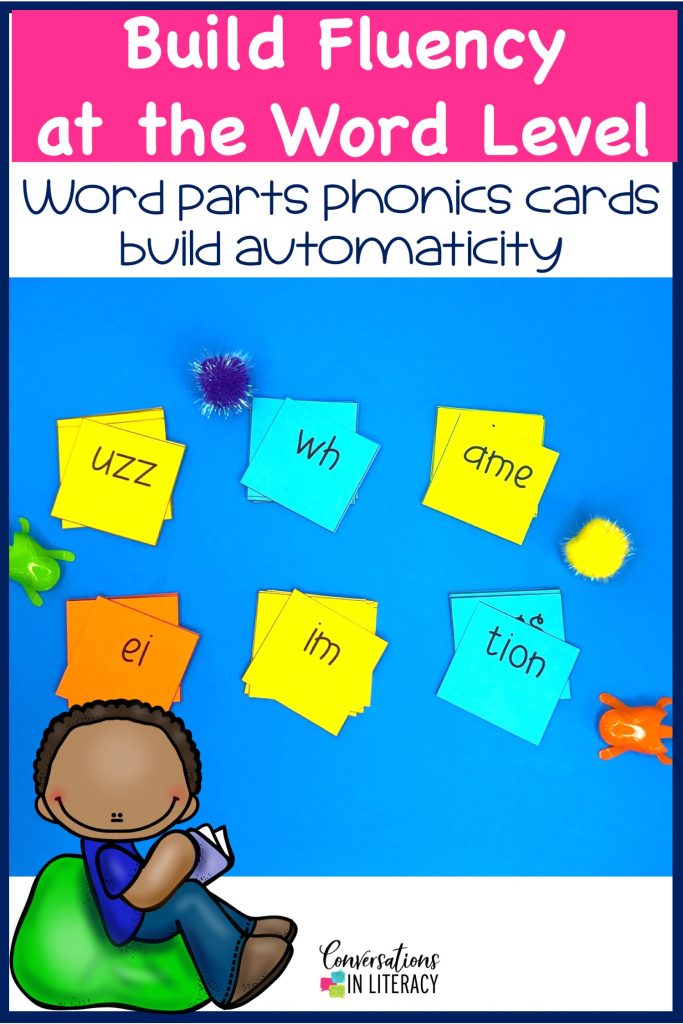
I use cards a lot at both my guided reading table and during RTI reading interventions. Students make a lot of progress once they begin to learn the sounds and then build fluency with them!

As we build automaticity with word parts, I like to have my students work on word sort cards. The goal is to take that part they learned and apply it to the word and read it quickly.
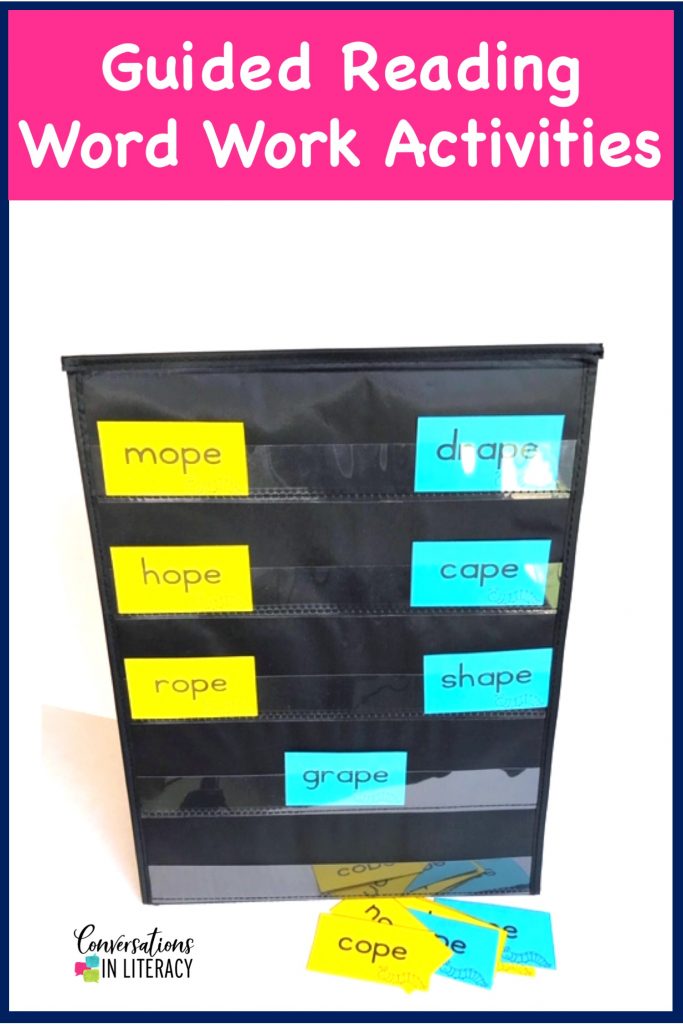
I give the students a few cards– not many as I want each activity to be quick and to teach with a sense of urgency. They can sort them on a table top pocket chart like this from Amazon.
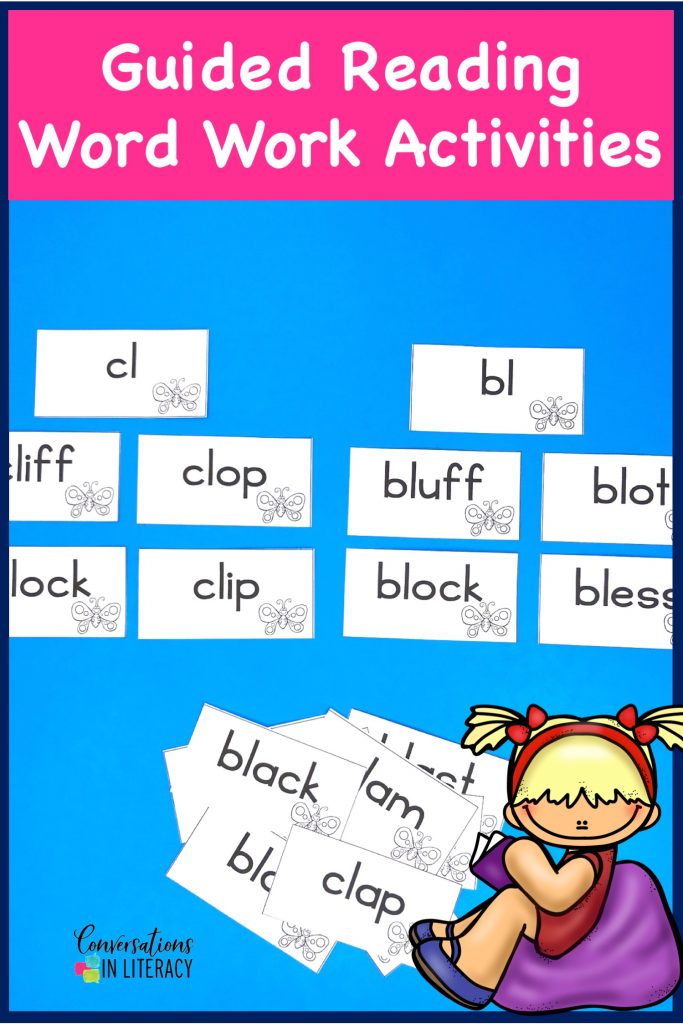
Print your cards using one color and have students sort as many as they can before the timer goes off. Collect the cards and then use a couple of those words in a sentence for the students to quickly write on a wipe off board. It is important to always get in the application piece.

Having no prep- just print and go- phonics activities in binders can be a HUGE time saver. These phonics binders take students from the sounds charts and word parts to whole words through to comprehension passages to build their fluency. You can find them here.

If you would like to try out the binders for free, you can check out this Blends and Digraphs freebie! You can find it here!


